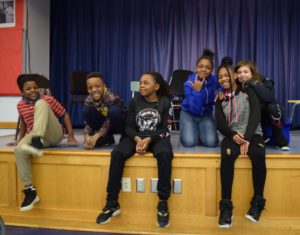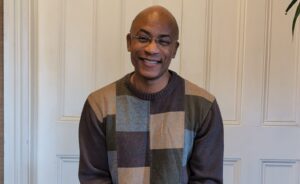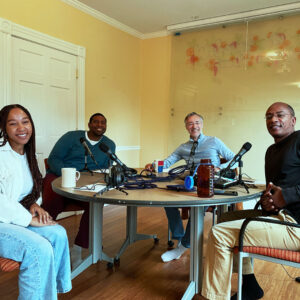Meet the Brain Committee! As part of my job as a Youth Educator at the Gandhi Institute, I get to work with different groups of students at School #19 to help improve the school for students, staff, and families. The Brain Committee is a dedicated group of 5th grade students at Charles T. Lunsford School #19 that works to make their school a better place by helping to solve problems. A lot of times, adults at the school try to come up with solutions to problems, but many times these solutions don’t work out very well. The Brain Committee formed when I asked a group of students this question:
“ Would you be willing to join a group of students whose job it is to solve problems at the school?”
Almost every student that I asked gave me a resounding “YES!”

The first dilemma that the Brain Committee tackled was the atmosphere in the cafeteria during their lunch period. At many elementary and middle schools across the country, students and adults are rarely set up for success. Students with low blood sugar and excess energy from sitting in class all morning arrive in the cafeteria, sit in rows under harsh fluorescent lights, and are expected to control themselves amidst the noise and chatter of 60-100 other students. Students often get involved in conflict with each other and make poor decisions that they wouldn’t make in other settings.
In response, adults in the cafeteria take steps to reduce the rowdiness. We often increase structure and limitations in the cafeteria. We decide that students are not allowed to leave their seats except to get their food.We choose to place them in a seating chart based on who they can sit next to and be quiet. We take these steps to try to keep the cafeteria more safe. At least this is what we were doing at School #19. Unfortunately, these changes weren’t working. Fights and upset students still seemed like a regular occurrence in the cafeteria.
With this in mind, the Brain Committee and I sat down to do some problem solving about issues in the cafeteria. We started by answering the same questions that Dominic Barter often uses when he sits down with a group of youth. Dominic is a community builder and leader in the field of restorative practices in Brazil. He has focused his energy on finding ways to support people who do not have structural power so that they can have a voice, feel empowered, and take ownership over their own situation. Dominic starts by asking these simple questions:
- What is going well?
- What is not going well?
- In an ideal world, what would the situation look like?
The Brain Committee answered these questions and then made a new plan for the cafeteria. They proposed splitting the cafeteria up into an area for socializing, an area for quiet games and reading, and a cool-down table at the back of the cafeteria for students to take a break. After developing and revising the plan, they pitched it to the principal, made changes based on her feedback, and then presented the idea to their teachers and fellow students. Once everyone was on board, the Brain Committee implemented their changes in the cafeteria.
As the group of students put their plan in place, they collected data to determine whether or not the changes were improving the cafeteria for them and their classmates. After looking at the data, they learned that students liked picking their own seats and realized that the cool down table wasn’t being used. They then modified their strategy to continue improving the lunchtime atmosphere
By the end of the year, the cafeteria was feeling like a much better place to be. Brain Committee members started each lunch period by distributing games, coloring sheets, and art supplies. Each day, students competed in art challenges and class competitions to win the chance to pick the songs they listened to as part of Music Friday. In the last three months of the school year there were zero fights during the Brain Committee’s lunch period.
In addition to improving the school atmosphere, the Brain Committee gave the fifth grade participants an opportunity to become more engaged and invested in their educational process. When students take ownership over their educational process, they are more likely to want to come to school each day. In several studies across the country, we can see that the more often students come to school, the more likely they are to succeed and graduate from high school. As we get ready for the coming school year, the Brain Committee’s model will expand as students in other grades will also get the chance to participate in more project-based research as part of their weekly enrichment programming.




